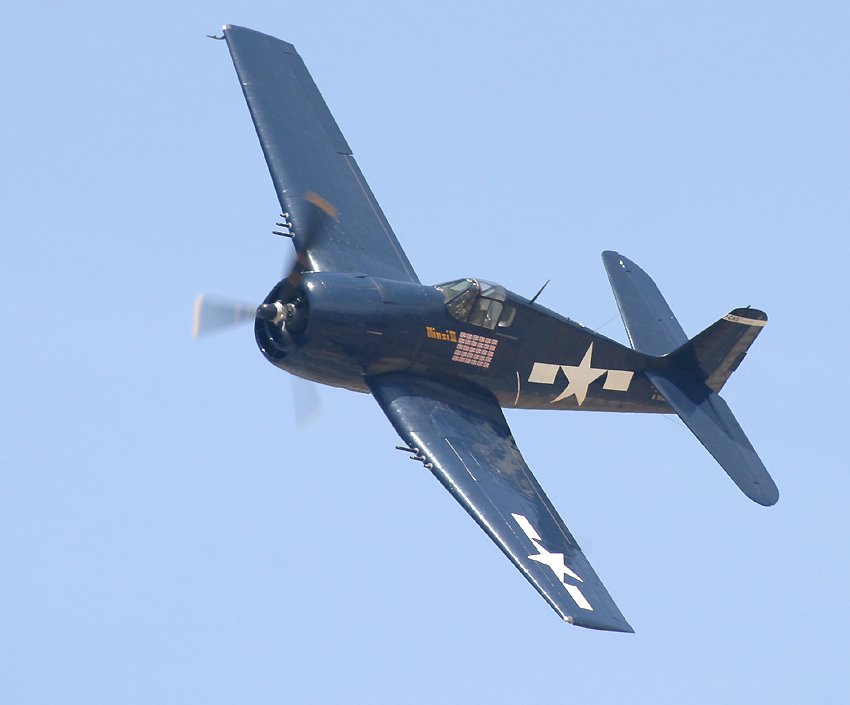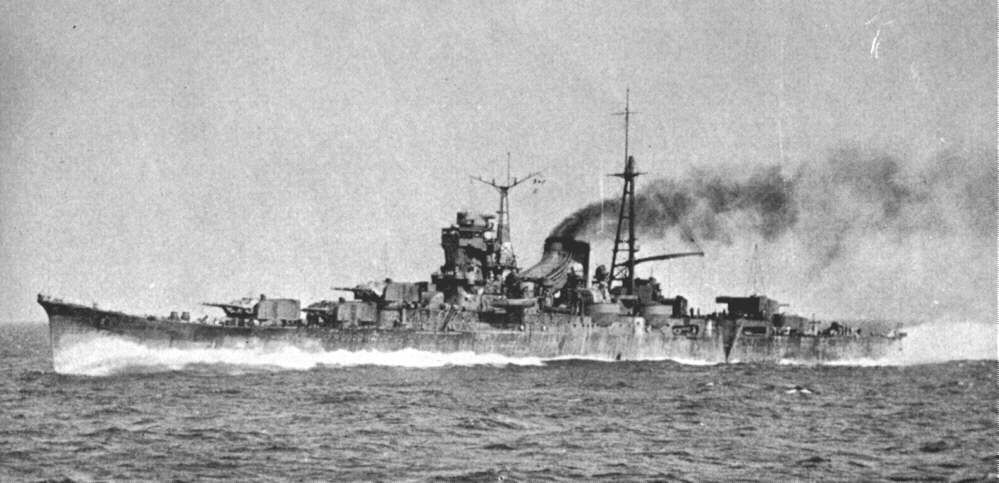USS Saratoga takes on Japanese Navy at Rabaul

After the attack on Rabaul harbour on the 2nd November a new threat developed for the landings on Bougainville. The Japanese had been careful to avoid exposing their ships to undue risk but they now felt compelled to bring in a force of seven heavy cruisers, one light cruiser and three destroyers. They were spotted refuelling in Rabaul and it was obvious they were set for an attack on the ships off Bougainville.
The U.S. had no capital ships near enough that would be able to challenge a force of this strength.
In early 1943, Rabaul had been distant from the fighting. However, the Allied grand strategy in the South West Pacific Area—Operation Cartwheel—aimed to isolate Rabaul and reduce it by air raids. Japanese ground forces were already retreating in New Guinea and in the Solomon Islands, abandoning Guadalcanal, Kolombangara, New Georgia and Vella Lavella.
Rabaul—on the island of New Britain—was one of two major ports in the Australian Territory of New Guinea. It was the main Japanese naval base for the Solomon Islands campaign and New Guinea campaign. Simpson Harbor—captured from Australian forces in February 1942—was known as "the Pearl Harbor of the South Pacific" and was well defended by 367 anti-aircraft guns and five airfields.
Lakunai and Vunakanau airfields were prewar Australian strips. Lakunai had an all-weather runway of sand and volcanic ash, and Vunakanau was surfaced with concrete. Rapopo—14 mi (12 nmi; 23 km) to the southeast—became operational in December 1942 with concrete runways and extensive support and maintenance facilities. Tobera—completed in August 1943 halfway between Vunakanau and Rapopo—also had concrete strips. The four dromes had 166 protected revetments for bombers and 265 for fighters, with additional unprotected dispersal parking areas. The fifth airfield protecting Rabaul was Borpop airfield, completed in December 1942 across the St. Georges Channel on New Ireland.
The anti-aircraft defenses were well coordinated by army and naval units. The army operated 192 of the 367 antiaircraft guns and the navy 175. The naval guns guarded Simpson Harbor and its shipping and the three airfields of Tobera, Lakunai, and Vunakanau. The army units defended Rapopo airfield, supply dumps and army installations; and assisted the navy in defending Simpson Harbor. An effective early warning radar system provided 90 mi (78 nmi; 140 km) coverage from Rabaul, and extended coverage with additional radars on New Britain, New Ireland, and at Buka. These sets provided from 30–60 minutes early warning of an attack.
Land-based air attacks
From 12 October 1943, as part of Operation Cartwheel, the U.S. Fifth Air Force, the Royal Australian Air Force and the Royal New Zealand Air Force—directed by the Allied air commander in the South West Pacific Area, General George Kenney—launched a sustained campaign of bombing against the airfields and port of Rabaul. After the first raid of 349 aircraft, bad weather blunted the effect of bombing, which saw only a single raid by 50 B-25 Mitchell medium bombers on 18 October. However sustained attacks resumed on 23 October and continued for six days, before culminating in the large raid of 2 November.
Nine squadrons of B-25s—totalling 72 bombers—and six squadrons of P-38 Lightning escorts attacked the anti-aircraft defenses and Simpson Harbor with minimum altitude strafing and bombing attacks. Eight B-25s were shot down by AAA or Japanese naval fighters, or crashed attempting to return to base. Among them was that of Major Raymond H. Wilkins of the 3rd Attack Group, posthumously awarded the Medal of Honor for his leadership. Nine of the 80 P-38s were also lost.
Carrier attacks
On Bouganville the Japanese had two airfields in the southern tip of the island, and another at the northernmost peninsula, with a fourth on Buki just across the northern passage. Instead of landing his forces near the Japanese airfields and taking them away against the bulk of the Japanese defenders, Admiral William Halsey landed his invasion force of 14,000 marines at Empress Augusta Bay, about halfway up the west coast of Bouganville. There he had his Seabees clear and build their own airfield. Two days after the landing Admiral Mineichi Koga sent a large cruiser force down from Japan to Rabaul in preparation for a night engagement against Halsey's screening force and supply ships in Empress Augusta Bay. The Japanese had been conserving their naval forces over the past year, but now committed a force of seven heavy cruisers, along with one light cruiser and four destroyers. At Rabaul the force refueled in preparation for the coming night battle.
Halsey had no surface forces anywhere near equivalent strength to oppose them. The battleships Washington and South Dakota and assorted cruisers had been transferred to the Central Pacific to support the upcoming invasion of Tarawa. Other than the destroyer screen for the transports, the only force Halsey had available were the carrier airgroups on Saratoga and Princeton. Rabaul was a heavily fortified port. With five airfields and extensive anti-aircraft batteries, the navy fliers considered it a hornet's nest. Up to that point in the war, other than the surprise raid at Pearl Harbor no mission against such a heavily defended target had ever been undertaken using carrier aircraft. It was a highly dangerous mission for the aircrews, and jeopardized the carriers as well. Halsey later said the threat the Japanese cruiser force at Rabaul posed to his landings at Bouganville was "the most desperate emergency that confronted me in my entire term as ComSoPac."

US Navy pilots Ensign Charles Miller, Lieutenant Henry Dearing, and Lieutenant Bus Alber walking toward their aircraft aboard USS Saratoga, 5 Nov 1943; note F6F fighter
With the landing in the balance, Halsey sent his two carriers under the command of Rear-Admiral Frederick Sherman to steam north through the night to get into range of Rabaul, then launch a daybreak raid on the base. Approaching behind the cover of a weather front, Sherman launched all 97 of his available aircraft against Rabaul. Aircraft from Barakoma Airfield on recently captured Vella Lavella were sent out to intercept the task group and provide some measure of air cover. Back at Rabaul, the carrier force drove their attack home. Under orders to make preference of damaging more ships rather than sinking a few, the air strike was a stunning success, inflicting damage on most units of the cruiser force and neutralizing it as a threat. The daybreak bombing of Rabaul was followed up an hour later with a raid by 27 B-24 Liberator heavy bombers of the Fifth Air Force, escorted by 58 P-38s. Most of the Japanese warships returned to Truk the next day to receive repairs and get them out of range of further Allied airstrikes. A serious threat had been neutralized.

F6 Hellcat
Saratoga was designed to carry 78 aircraft of various types, including 36 bombers, but these numbers increased once the Navy adopted the practice of tying up spare aircraft in the unused spaces at the top of the hangar. In 1936, her air group consisted of 18 Grumman F2F-1 and 18 Boeing F4B-4 fighters, plus an additional nine F2Fs in reserve. Offensive punch was provided by 20 Vought SBU Corsair dive bombers with 10 spare aircraft and 18 Great Lakes BG torpedo bombers with nine spares.
Miscellaneous aircraft included two Grumman JF Duck amphibians, plus one in reserve, and three active and one spare Vought O2U Corsair observation aircraft. This amounted to 79 aircraft, plus 30 spares.[ In early 1943-5, the ship carried 53 Grumman F6F Hellcat fighters and 17 Grumman TBF Avenger torpedo bombers.
Damage to the Japanese forces at Rabaul were as follows:
Six cruisers damaged, four heavily. Atago was near-missed by three 500 lb (230 kg) bombs that caused severe damage and killed 22 crewmen, including her captain. Maya was hit by one bomb above one of her engine rooms, causing heavy damage and killing 70 crewmen. Mogami was hit by one 500 lb bomb and set afire, causing heavy damage and killing 19 crewmen.

Mogami
Takao was hit by two 500 lb bombs, causing heavy damage and killing 23 crewmen. Chikuma, was slightly damaged by several near-misses. Agano was near-missed by one bomb which damaged one anti-aircraft gun and killed one crewman. Three destroyers were also lightly damaged. Aircraft losses in the raid were light.
An additional carrier unit—Task Group 50.3 (TG 50.3) of the U.S. 5th Fleet—reached Halsey on 7 November. Commanded by Rear Adm. Alfred L. Montgomery, it consisted of the carriers Bunker Hill, Essex and Independence. Halsey used Montgomery's ships as well as TF 38 in a double carrier strike against Rabaul on 11 November. Sherman launched a strike from near Green Island, northwest of Bougainville, which attacked in bad weather at about 08:30. After its return, TF 38 retired to the south without being detected. Montgomery launched from the Solomon Sea 160 mi (140 nmi; 260 km) southeast of Rabaul.
Agano—which had remained at Rabaul after the 5 November strike—was torpedoed and heavily damaged in these attacks. The Japanese launched a series of counterattacks involving 120 aircraft against the U.S. carriers, but the force was intercepted and lost 35 planes without inflicting damage on Montgomery's ships.


Chikuma under attack




No comments:
Post a Comment